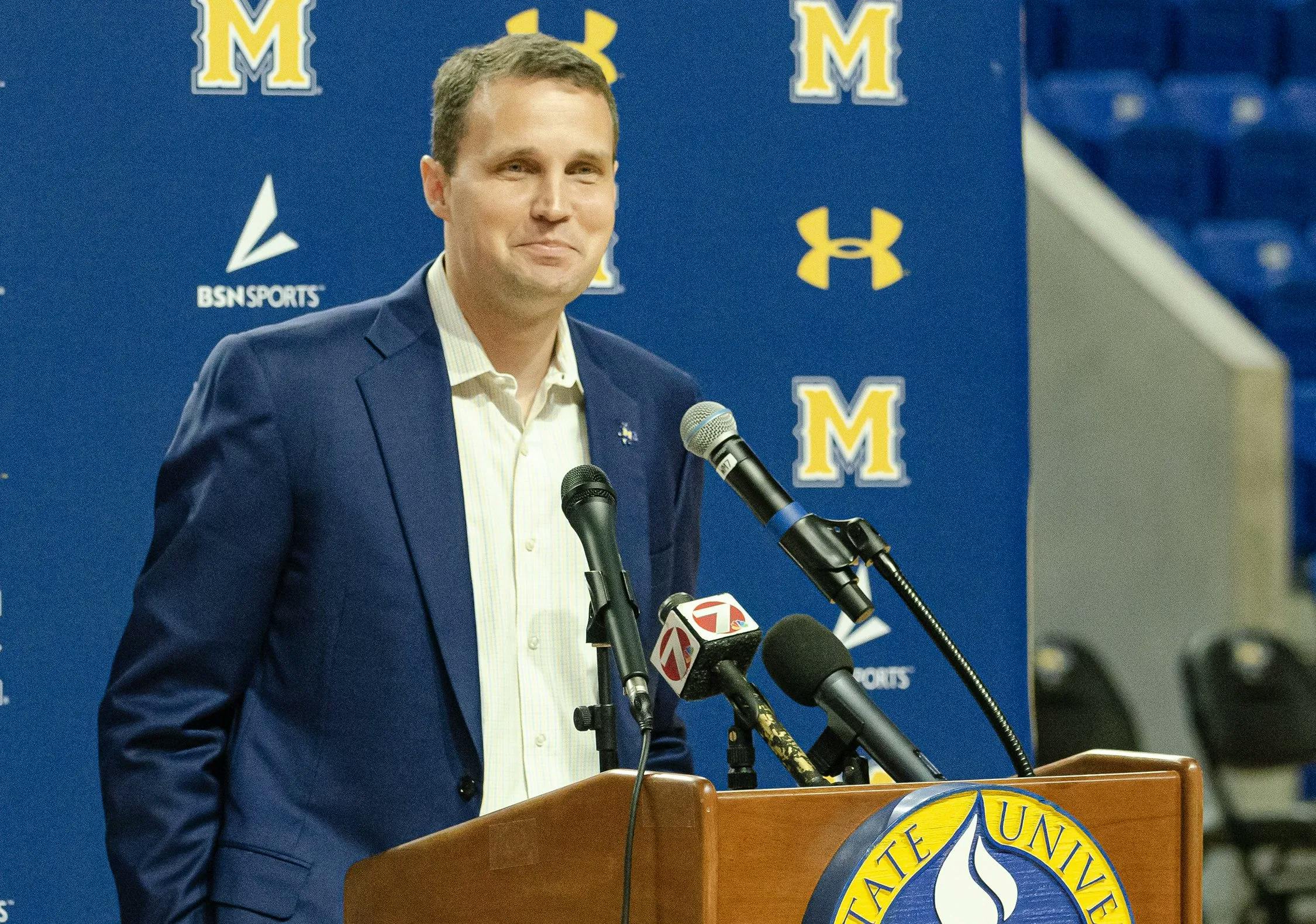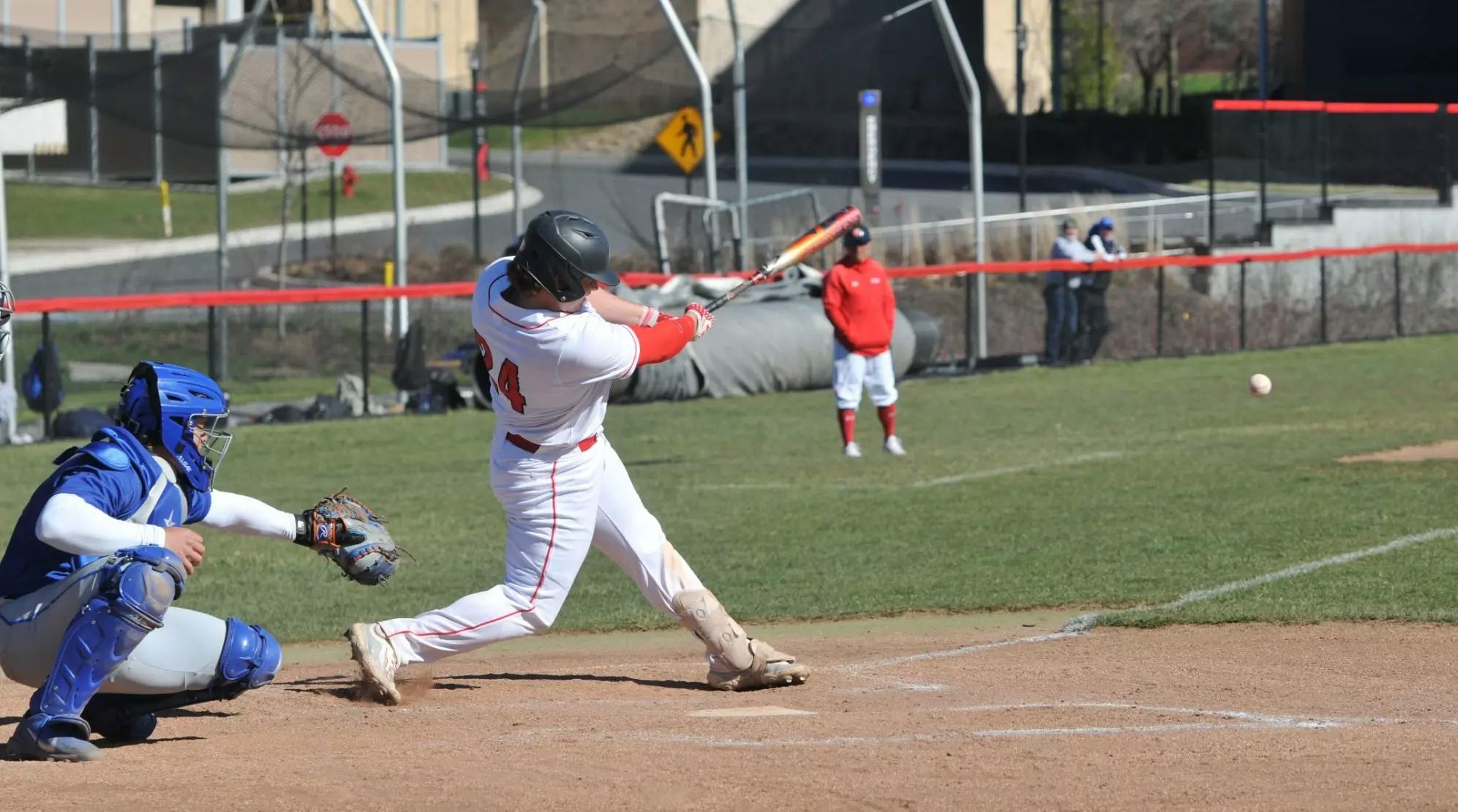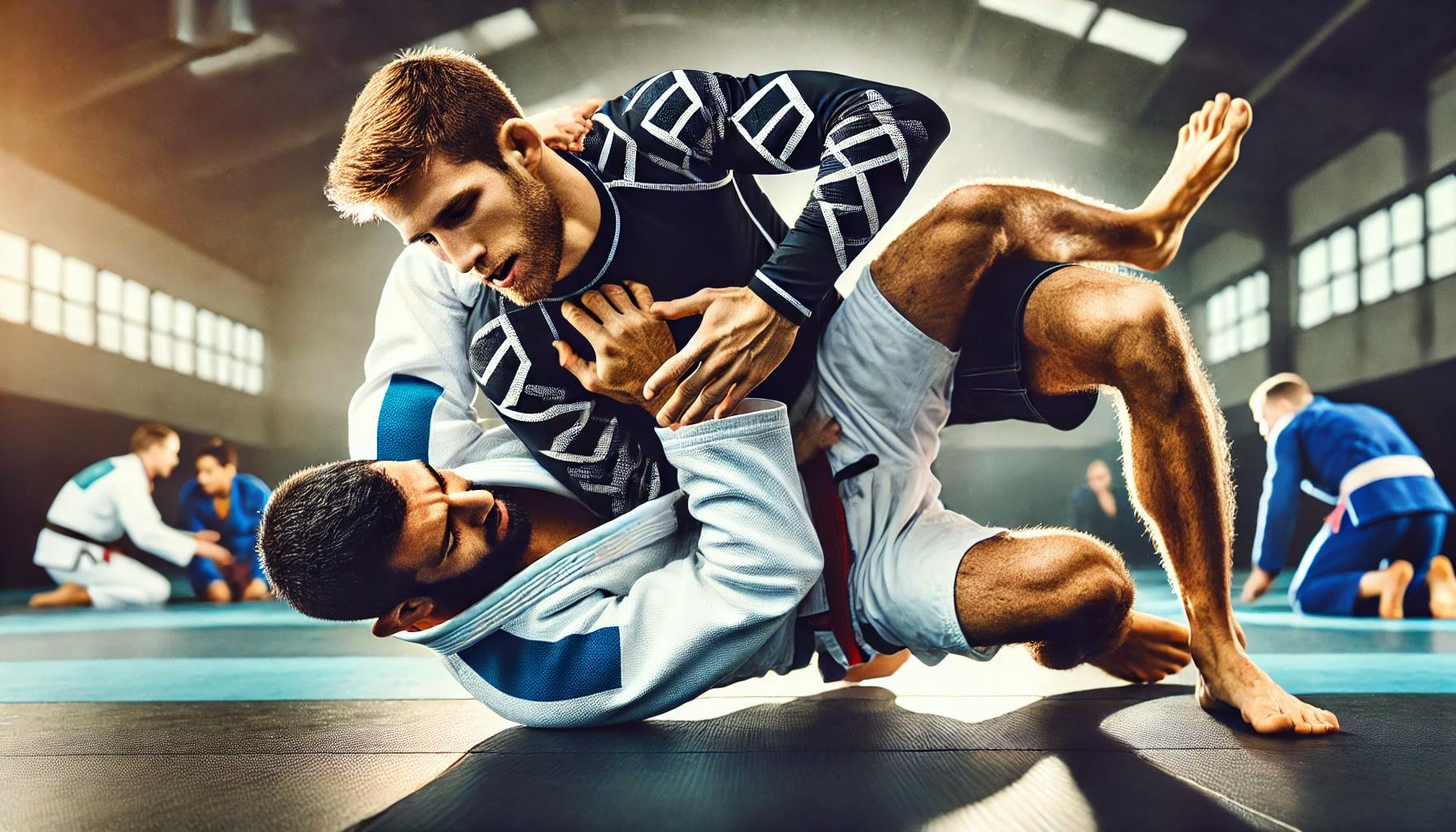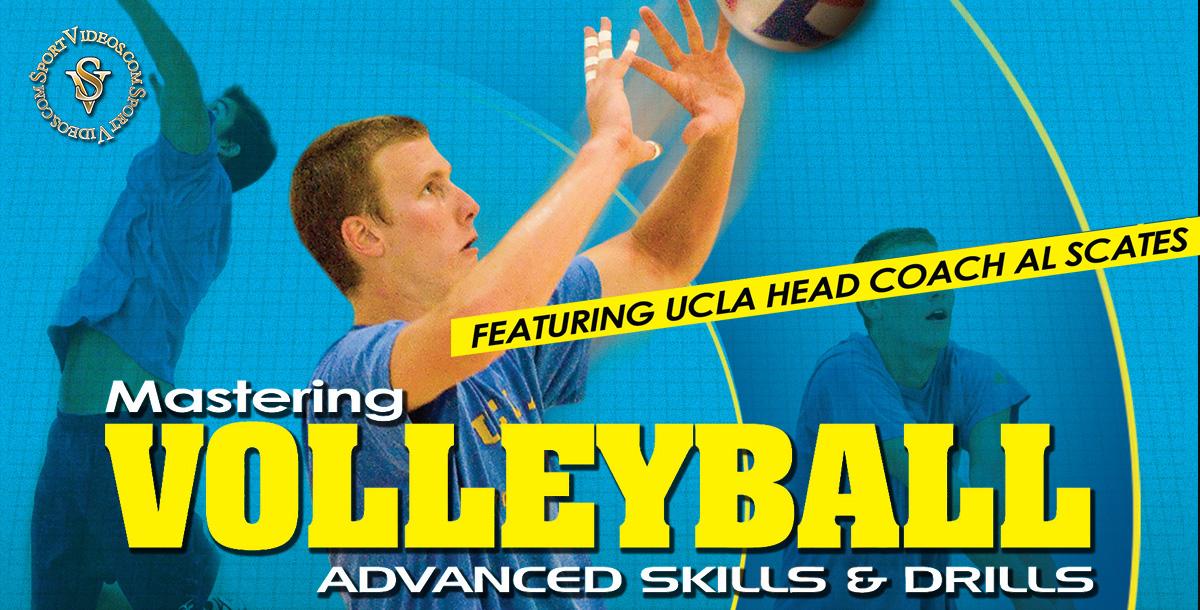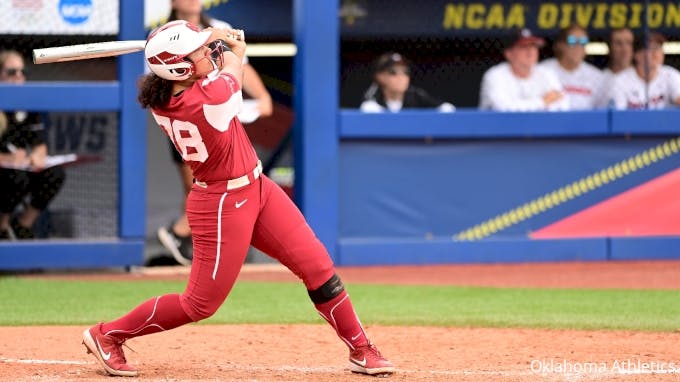Thursday, April 10, 2025
US Sports Lacrosse: How To Perfect Your Skill In Playing Lacrosse and Game Highlights Toronto Rock vs Las Vegas Desert Dogs
Lacrosse is a fast moving sport, and it is also fast growing. If you or someone you know yearns to learn how to play lacrosse, the following procedures briefs you on the basics of this sport. But first, let us take a good short look about lacrosse.
Each opposing teams on a lacrosse field is composed of 10 players, so a field has a total of 20 players. Each team is composed of 3 attackmen, 3 middies, 3 defensemen and 1 goalie.
A game is divided into 4 quarters like basketball, and like all other games, the team scoring the most points at the end of the game emerge as winner.
0:00 / 0:00
15 seconds
15 seconds
A player earns a score by shooting the ball from their stick’s pocket into the opponent team’s goal.
The lacrosse ball is a solid rubber ball about the size of a baseball.
An opponent team can dispossess you of your ball either by hitting you with their stick or with their body. A player has to cradle to prevent the ball from falling out.
It is important that a middie make an outside shooting. The defense can shift their game completely if threatened by a good outside shooting.
A player who has the ball can get past the defenseman by using different dodges such as face doge, split dodge, and bull dodge.
The procedures below outlines step by step the proper way of playing lacrosse.
CHOOSING YOUR STICK. A branded lacrosse stick is quite expensive. If you just want to learn how to play, go to your local sports store, where a basic stick won’t cost you as much as a branded stick. There are three main components of a stick. The Head- this is the piece at the top of the stick used for controlling the ball. The Mesh- this is the rope suff inside the head, also known as the stringing. Finally, The Shaft- it was traditionally made out of wood, but nowadays they are made of strong metal alloys and have varying weights and strength. If your right hand is your good hand, put your left hand on the bottom and right hand on top. Switch for your left hand.
LEARN HOW TO CRADLE. A necessary skill that is important to lacrosse is cradling, which is the equivalent of dribbling in basketball. Cradling is the technique of getting past the defense man without him taking the ball out of your stick. Use centripetal force to keep your ball in place by a curling motion with your wrist. This is best done in front of a mirror while starting. Place the ball in your pocket (the area where the ball sits in your mesh) and hold your dominant hand a few inches below the head. Begin with the head facing the mirror so you can see the ball. Now bring the head across your face while curling the wrist. Keep practicing until you are get used to it. If you find it hard to get the hang of it, try watching some lacrosse dvds until you are familiar with all the game’s moves and techniques.
LEARN TO PASS. In lacrosse, passing is one of the most critical skills to succeed in the game. Passing is used to move the ball up field, catch your opponent out of position while hitting your teammate for an assist, or get yourself out of pressure. Make the head next to your ear and ruffle your wrist of your top while pulling your bottom hand towards you. Don't let it hook around your neck. Be sure to go through with the motion. Eventually, you will get used to how your stick throws and can then adjust the way you throw to be more accurate. You can imp[rove your skills in lacrosse by is getting to a brick wall and playing "wall ball." stand a few feet from the wall and throw the ball against it. Practice catching as the ball bounces back towards you.
BE A GOOD CATCHER. Catching is about hand-eye coordination. Catch the ball in your stick and make sure you don't cradle as it enters your stick. This is called cradle catching and is done by beginners. Instead of cradling, just release your grip on your top hand and as the ball enters the stick give and ease the ball into the stick. Again, wall ball practice is recommended.
GAMES ARE WON AND LOST IN GROUND BALLS, that's a fact. While approaching the ball step to it place your foot near the ball. Sink your hips and put your head parallel to the ground. The butt of your stick have to get down low as well. Scoop through and bring the head to your face. Immediately look for an outlet to a team mate.
PASS, CATCH. AND CRADLE USING BOTH HANDS. Using both hands requires patience, and you have to practice over and over again to learn this skill. A good way to improve your off-hand skills is to look at what your dominant hand is doing. Mirror the way you are passing. Go through the same motions. After doing this, spend a week of practice using nothing but your non-dominant hand. During line drills, 6v6, fast break, only use your off-hand. This will be very frustrating, but keep doing it. It will go a long way in improving your skills.
Noel Guntan is a write for Mondex Professionals US. His current area of interest is in sports supplies and sporting goods
Wednesday, April 9, 2025
US Sports Basketball: McNeese State Basketball Coach Will Wade’s 4 Core Pillars and Houston/Florida NCAA March Madness Final Two Minutes
Congratulations Gators! Now Streaming On US Sports Radio
McNeese State Basketball Coach Will Wade’s 4 Core Pillars
- By Grant Young
In a stunning display of basketball prowess and resilience, the No. 12-seeded McNeese State Cowboys delivered a performance for the ages, toppling the heavily favored Clemson Tigers in one of the most memorable upsets of the 2025 NCAA Tournament.
The victory was more than just a game—it was a testament to the transformative culture and basketball development program cultivated by head coach Will Wade. Since his arrival, Wade has instilled a unique blend of tactical innovation, psychological toughness, and unwavering belief that turned McNeese State from a mid-major afterthought into a giant-killing machine.
0:00 / 0:00
15 seconds
15 seconds
Wade's approach goes beyond traditional coaching. He has created an environment where players understand that their potential isn't defined by their recruiting stars or conference reputation, but by their collective hunger and strategic preparation. This upset wasn't a fluke—it was the result of meticulous film study, adaptive game planning, and a team that believed it could compete with anyone.
One key to their success was their ability to stay composed under pressure. While Clemson's players looked increasingly frustrated, the McNeese State players remained locked in, treating each possession like a championship moment. Their composure spoke volumes about Wade's leadership and mental conditioning.
This wasn't just a basketball victory—it was a statement. McNeese State proved that with the right culture, strategic preparation, and unbreakable team spirit, David can indeed topple Goliath on the biggest stage of college basketball.
Developing a team culture that can culminate in seismic upsets like these has always been a big part of how Wade runs his programs. And in his ‘Will Wade - McNeese State - Creating a Standard’ clinic, Coach Wade provides actionable insights on setting and maintaining team standards that drive success both on and off the field.
One key component to this clinic is Coach Wade’s ‘Four Pillars’, which are detailed at length and what Coach Wade leans on to help guide his team culture in a continuously positive direction. We have pulled these four pillars and are sharing them with you below.
Pillar 1: Respect
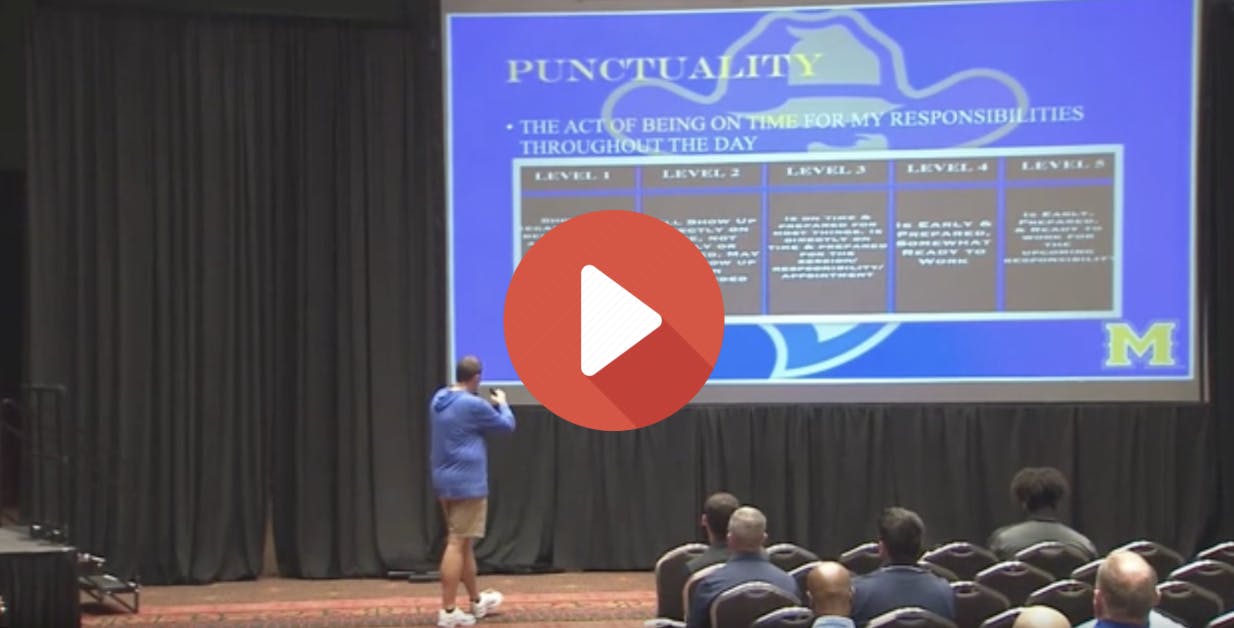
Coach Wade asserts that one of the core components of respect of punctuality, which he phrases as, “The act of being on time for my responsibilities throughout the day.”
Coach Wade has a way of quantifying punctuality, as he has a created google sheet that tracks and ranks how punctual every player on the roster is to every responsibility they have each week. They can either be ranked my teammates, coaches, or other members of the program, and they will then be assessed from a level one (the lowest) to a level five (the highest) at the end of the week.
The next step of this pillar is effort, which means giving 100% effort daily. He’ll also have players ranked on this from level one to level five, although level five is above and beyond in this category. And while this has to do with the basketball court, it also pertains to every other aspect of a student athlete’s life.
Third within the respect pillar is appreciation, which is being thankful for the opportunity they’ve been presented and showing it via attitude and gratitude. This means making the effort to say please and thank you, addressing people by name, and understanding how everyone within the program is playing their role in the team’s success. This is also graded and ranked from levels one to five.
Pillar 2: Mind, Body, and Nutrition
Coach Wade goes on to explain how important keeping the mind and body healthy is equally important, and matters greatly as a core pillar.
An important aspect of this pillar is that it’s on each player individually to keep these in good standing. While they can have access to all the resources, the bottom line is that each player has the final say on what they’re putting into their bodies, both in terms of nutrition and the content they’re consuming that could impact their mind.
While this not to say that a player has to be perfect with every meal or can’t unwind by watching TV, they need to be sure to at least find balance and make a genuine effort to put their best foot forward in optimizing their physical and mental health before, during, and after the season.
Pillar 3: Basketball Identity
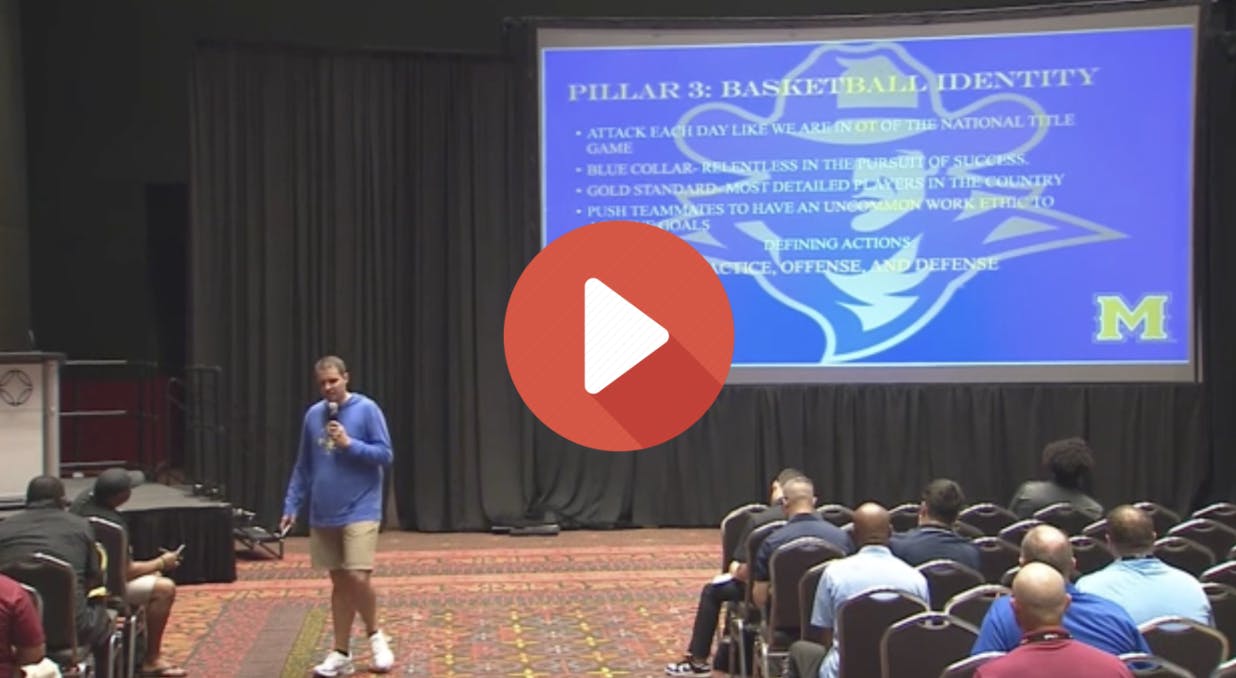
The next part of Coach Wade’s core pillars is basketball identity, which to him is about being a gritty, blue-collar team that has earned everything they’ve received.
He also discusses how he wants to make the most detail-oriented players in the country both on and off the court, and that teammates and members of the coaching staff should be working to all hold each other accountable on a daily basis so that the best version of them, both individuals and collectively, presents itself.
All of these things are graded so that there are clear metrics that a player can use to gauge their improvement.
Pillar 4: WE > ME
The fourth and final pillar for Coach Wade’s McNeese State squad is We > Me, which he terms as whatever is necessary for the team to be successful, even if it comes at the cost of individual acclaim and accolades.
One rule Coach Wade has is that he doesn’t allow players to wear the gear of another school or program inside the facility, because that isn’t a visual representation of togetherness and build pride in what the team is doing.
What’s more, team gear should always remain clean
and orderly because how a player presents and conducts themselves both
inside and outside of the facility is a reflection of the entire
program, whether they like it or not.

All kids deserve a chance to play #YouthSports –
regardless of their ability. Help expand inclusive programs as part of
the National Youth Sports Strategy from @HealthGov: https://bit.ly/2lQ85f6Tuesday, April 8, 2025
US Sports Football Feat. 7 RPO’s for your playbook and UFL Top 10 Plays From Week 2
2025 March Madness Blockbuster Or Dud? Now Streaming On US Sports Radio
By Coach Keith
The RPO continues to evolve and find its way into every type of offense at every level. These seven plays are from top coaches at every level who have utilized RPO to bring their offense to the top. For some, the RPO has even helped propel their climb up the coaching ranks.
Check out these videos, and I am sure it will spark some thought and interest into how you can do more in your offense with the RPO.
Play 1: Bobby Acosta, Head Coach, IMG Academy
Coach Acosta has experience at every level of the game from FBS to HS and his knowledge of offense is part of his ability to be able to lead top programs. In this video, Acosta shares his Fungo Storm RPO which clearly leaves linebackers confused.
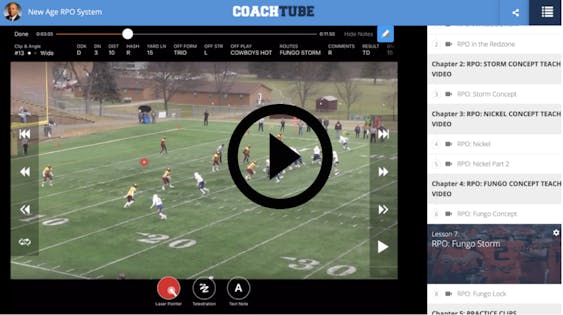
Play 2: Jason McManus, Offensive Coordinator, Chapman HS
Coach McManus has been a part of four state championship in South Carolina and also served as the OC in the Under Armour All-American Game. In this video, McManus shares his Outside Zone/FB Wheel RPO which puts extreme stress on the linebacker to fit the run or cover downfield.
Play 3: Brent Dearmon, Offensive Coordinator, Kansas
Coach Dearmon has had a meteoric rise to the top of the profession and his RPO offense has fueled it. In this video, Dearmon shares his C-Gap Triple Option RPO.
Play 4: Matt Drinkall, Tight Ends Coach, Army
Coach Drinkall made the jump from being a head coach at the NAIA level where he led Kansas Wesleyan to a top 10 program to Army West Point.
Play 5: Lucas Lueders, Offensive Coordinator, Central Missouri
After leading Morningside College’s offense to back-to-back NAIA National Championships in 2018-19, and a nod as the Football Scoop NAIA Coordinator of the Year, Lueders has moved on to Central Missouri bringing his high power offense with him. In this video he shares his 3rd level RPO designed to give the offense explosive plays.
Play 6: Alan Hensell, Head Coach, Franklin College
Coach Hensell returns to his alma mater Franklin College after spending the last five seasons on staff at the University at Buffalo as the Tight End Coach. He assisted in turning around the Buffalo football program by helping guide the Bulls to three straight bowl appearances from 2017 to 2019. The Bulls offense utilized the tight end position to create dynamic weapons for their offense. Hensell shares his InsideZone/Stick Concept RPO in this video.
Play 7: John Pennington, Head Coach, West Virginia State
John Pennington enters his fourth year as the Head Football Coach at West Virginia State University in 2020. In 2017, his first year he led the Yellow Jackets to their first winning season in over a decade. The Yellow Jacket offense is one of the top offenses in NCAA DII. In this video Pennington illustrates his A-Gap Zone RPO.

Everyone has a role to play in the National
#YouthSports Strategy! Learn more about the strategy and ways to get
involved from @HealthGov: https://bit.ly/2lQ85f6Monday, April 7, 2025
US Sports Baseball Feat. Four Quotes to Hit Better With Two-Strikes and Cardinals vs. Red Sox Game 2 Highlights
The Radio Home Of Champions. US Sports Radio
- By Grant Young
Any baseball hitting approach coach can empathize with the fact that hitting with two strikes is exceedingly difficult for several reasons:
1. Psychological Pressure: When a batter has two strikes against them, the pressure intensifies. They know that one more mistake could lead to an automatic out, which can lead to anxiety and affect their focus and decision-making.
2. Pitcher’s Advantage: With two strikes, the pitcher has a greater advantage since they can throw a wider variety of pitches to try to induce a swing-and-miss. They often employ breaking balls or off-speed pitches that can catch hitters off guard.
3. Swing Adjustments: Batters may feel compelled to shorten their swing or alter their approach to make contact, which can compromise their usual mechanics. This can lead to hitting the ball poorly or missing it altogether.
4. Zone Awareness: With two strikes, batters have to be more discerning about the pitches they swing at. This heightened sense of caution can lead to hesitant swings or missed opportunities on pitches that are in the strike zone but not necessarily ideal for hitting.
5. Increased Focus: The need to focus intensifies with two strikes, as batters must anticipate the pitcher's next move while also adjusting to the potential of getting struck out. This heightened focus can be a double-edged sword; while it can help in making better decisions, it can also lead to tension.
These factors combine to make hitting with two strikes a difficult task, requiring not just skill but also mental resilience and adaptability. However, while nothing will keep hitters from being at a disadvantage with two strikes, having a solid hitting approach in these situations can help balance the odds.
Brandon Matthews is a professional hitting instructor in North Carolina. Coach Matthews has almost 20 years of coaching experience at all levels from youth to professional baseball. In 2017, he started Swing Angry LLC for baseball and softball hitting instruction. Since then, Coach Matthews has performed thousands of lessons with youth to professional hitters.
In his ‘2 Strike Hitting: Approach, Philosophy, & Strategy’ course, Coach Matthews will teach you some unique strategies and game plans for handling 2 strike situations, such as controlling the at-bat before there are two strikes, how to remain aggressive, and diving deeper inside the data of pitch counts to help hitters better understand when the odds are more in their favor. We’ve pulled some of Coach Matthews’ best wisdom and included it for you below.
Hunt In The Zone
Coach Matthews asserts that most coaches will say that they want their hitters to expand the strike zone with two strikes so that there’s less of a chance that they’ll strike out.
To dispute this, he drops a quote from baseball legend Ted Williams, who said, “Giving the pitcher an extra two inches around the strike zone makes it 35% larger. Make sure you get a good ball to hit.”
Coach Matthews backs this point up by conveying that trying to avoid the strikeout isn’t the be-all-end-all when it comes to a two-strike approach. This is because if you swing at a bad pitch that’s not in the strike zone just so you aren’t called out on strikes, you’re still almost certainly going to be out. Not to mention that umpires (less skilled ones) are typically hesitant to call someone on strikes anyway.
“Everything in life happens twice: the first time in your mind and the second time in reality,” Coach Matthews goes on to say. What he means by this is that if a hitter’s approach is to expand the zone with two strikes, they’re already telling themselves that they’re going to chase something out of the strike zone and be content with weak contact.
Plus, this is going to make it much harder for a hitter to shut down their swing and not trigger to chase a breaking ball in the dirt or some other two-strike pitch that a hitter might see.
The bottom line is that if the hitter doesn’t chase with two strikes, the pitcher will still need to make a quality pitch in the strike zone to get the hitter out. Understanding this will increase the chances a hitter makes hard contact with a two-strike pitch.
External vs Internal
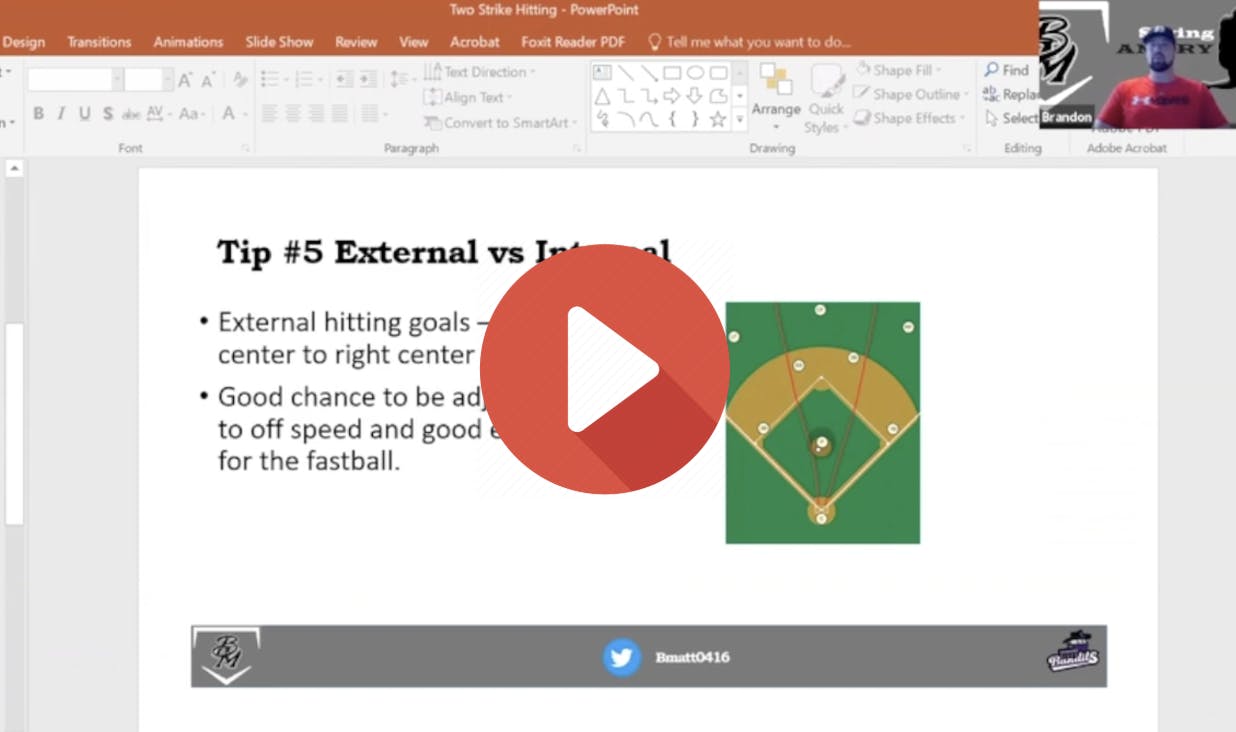
“When we get to a two-strike situation, if you can pick out an area of the field… if you can have an external goal to hit the ball hard somewhere on that [opposite field] area, it gives you some adjustable timing,” Coach Matthews said.
What he means by this is that preparing to hit the ball up the middle or to the opposite field will naturally make the hitter stay back on the ball more. This will not only make them less susceptible to chasing breaking balls in the dirt, but it will give them a bit more time to react and try to foul off a fastball or another pitch they weren’t expecting.
Coach Matthews also adds that if a team has enough data on what an opposing pitcher likes to do with two strikes, they can hunt specific zones and sometimes hunt specific pitches if a pitcher is disposed toward one pitch with two strikes.
“We can be adjustable in the hitting zone, and we can be adjustable in the strike zone.”
In
other words, a hitter doesn’t have to tighten up or be prepared to
chase as soon as they get to two strikes. They can relax, prepare to
wait on the ball, and hit it the other way.
Sunday, April 6, 2025
The Rock Almighty: Heartbreaking and No Tariffs On His Grace...
The Rock Almighty Shaker Of Heaven And Earth. Now Streaming On US Sports Radio!
- Author Larry Farmer
Heartbreaking
Many times defeat and loss are much stronger and longer lasting than even glorious victory. Victory is often fleeting, exhilarating in the present but soon a faded memory. Looking back on my favorite sports teams, their defeats (especially the close ones) exert powerful emotions that never actually go away. Crying at the time releases pent up feelings, but the heartache continues indefinitely.
0:00 / 0:00
15 seconds
15 seconds
One such situation occurred in the spring of 1968. The 1960’s were not good to Adolph Rupp, the legendary basketball coach of the Kentucky Wildcats. After winning four NCAA championships in the 1940’s and 50’s, he hit a dry spell that never ended. Oh, he had some excellent teams but would never again reach the pinnacle that seemed so easy in the past.
During the early years of the decade, Rupp pinned all his hopes on the flashiest player (Cotton Nash) he ever coached. Nash had some unbelievable games and was a god-like figure to many young schoolboys in Kentucky. However, the Nash led teams were overshadowed by Ohio State led by superstars Jerry Lucas and John Havlicek. In 1966 Rupp came close to the elusive fifth championship but had to settle for being runner-up to Texas Western. Because five white Kentucky starters were defeated by five Black Texas Western starters, the loss solidified Rupp’s reputation in the eyes of the media as a racist. In the late 60’s, UCLA and Coach Johnny Wooden would begin an incredible run of championships that would leave Kentucky and Rupp in the dust.
The sophomore class of 1967 provided Rupp with one last chance for redemption. It featured three clean cut, handsome, and talented young men. The group included Dan Issel, a 6-8 center who would go on to become Kentucky’s all time leading scorer. Issel later had a distinguished career in both the ABA and NBA. Also on the team was 6-4 forward Mike Pratt, a strong, solid workhorse and also a prolific scorer. Pratt, who passed away earlier this year, would become beloved as a color commentator on the Kentucky radio network. But, the guy who was supposed to make things happen was playmaker Mike Casey. Casey was a 6-4 guard who could both make plays and put points on the board. He had led his high school team (Shelby County) to a state championship, and most expected him to lead Kentucky out of the wilderness.
The boy wonders (Casey, Issel, and Pratt) did well in the early part of the 67-68 season but hit a slump in January. Their low point was a 28 point loss to archrival Tennessee. After the Tennessee debacle, the Wildcats rattled off eleven straight victories and claimed the SEC title. During that streak, Issel emerged as a scoring machine. He had done well early in the season, but late in the year he was simply fantastic. Casey, as expected, scored the most total points for the season with Pratt coming in third.
Going into the NCAA tournament, things looked good for Rupp as the regional would be played at Memorial Coliseum in Lexington, Kentucky’s home court. The first game, however, was expected to be a battle of epic proportions. Kentucky’s opponent was Marquette with its feisty and combative coach, Al McGuire. The Warriors (they are now the Golden Eagles) played a smash mouth, aggressive style that always spelled trouble for Rupp led teams. The game never lived up to its hype. Issel went wild, scoring 36 points as Kentucky put over 100 points on the board and won by 18. The only obstacle left between the Wildcats and the NCAA Final Four was Ohio State. Ohio State was good, but it was not the team of the early 60’s when Lucas and Havlicek were such dominating forces.
When I tuned in to the game on my car radio, it was early in the second half. At that time in my life, I was having some personal and professional problems. I won’t go into detail about why, but that fact made what was to come only worse. Cawood Ledford, the Kentucky announcer, greeted me by saying, “Kentucky is in trouble!” They were trailing by ten points and not playing at all well; the Buckeyes meanwhile were doing everything right. The Wildcats were in a grind-it-out game. They fought and clawed, gaining a few points here and a few points there. It turned into a situation where you had to take one step backwards in order to take two steps forward. As the seconds ticked down toward the end of the game, Issel tapped in a shot that put Kentucky up one. On the next possession an Ohio State pass was knocked out of bounds with three seconds left. The Buckeyes in-bounded the ball to Dave Sorenson who banked in a ten-footer as time expired. It was simply horrible, my defeat was complete!
As juniors; Issel, Casey, and Pratt had another good year, but this time they were romped by Marquette in an NCAA regional played in Wisconsin, the home of the SDS (Students for a Democratic Society). This time McGuire had his team psyched, and the fans helped by yelling “Heil Hitler” early and often at Rupp. After the 68-69 season, Casey broke his leg in an automobile accident; Issel and Pratt had to play their senior year without him. They were very good during the 69-70 season, often ranked number one in the country. However, they ran into Jacksonville and 7-0 Artis Gilmore in the NCAA regional finals and could not prevail. Looking back, their one big chance was taken from them by the late Dave Sorenson. I remember it well and always will; the only word to describe it is “heartbreaking.”
I received a bachelors degree in 1967 and a masters degree in 1971 from Western Kentucky University. I taught school for 44 years. One year was spent at Fordsville High School, 17 at Ohio County High School, and 26 at Trinity High School in Whitesville. The subjects I taught were government, history, and English. At Trinity I also served as coach, athletic director, and dean of students. I fancy myself a fairly good writer, and my main interests are sports and politics.
Saturday, April 5, 2025
US Sports Martial Arts: Guard Passing in MMA v.s. BJJ and ONE Fight Night 30 | All Fight Highlights 🔥
- By Owen Reilly
Though similar to pure Jiu-Jitsu, passing guard in MMA differentiates from the original grappling sport because of the inclusion of strikes. The ability of both you and your opponent to throw up-kicks from the bottom position and leg strikes when approaching your opponent's guard often affects how fighters approach passing the guard. Furthermore, the reward for passing guard differs in each respective sport. In pure sport BJJ, passing guard often yields two or three points depending on what organization you are competing in. MMA offers no points and is purely meant to gain a dominant position to hunt for submissions or land strikes.
0:00 / 0:00
15 seconds
15 seconds
Pressure Passing vs. Speed Passing
In sport BJJ, pressure passing is an often used style that works by slowly breaking your opponent down and grinding through their guard. Speed passing also provides an alternative path to victory using leg drags or knee slides. When we compare this to MMA, we see how pressure passing is a very dangerous passing style to employ. Because of the slow nature of this style, utilizing it in MMA will cause you to absorb numerous strikes from the elbows or fists. Speed style, on the other hand, allows you to stay mobile and minimizes the time spent in areas where you can be hit.
The Guards
The different types of guards will also affect how you decide to pass the guard. For example, passing a butterfly guard versus a closed guard will require different technical moves. In MMA, the types of guards used is typically simpler with the most common types being butterfly, closed, and half guards. This is because many of the more complex guards create more areas where the bottom man can be hit. In the sport of Jiujitsu, the wide variety of guards is more often put on display. Jiujitsu competitions may showcase more advanced guards along with the three simpler ones listed above including spider guard, de la riva guard, or x guard.
After Passing
Sport BJJ: After passing, the primary goal of pure jiujitsu competitors should be to move to a more dominant position such as taking the back or full mount, or hunting for submissions such as kimuras or americanas.
MMA: When passing in MMA, moving to a more dominant position is also an option, however, the primary goal should be to end the fight using ground and pound strikes. Submission opportunities, should they arise, also should be taken to end the fight. In MMA you are fighting to finish your opponent rather than to obtain points.
Despite the fundamentals being the same, the goals and stakes of passing the guard differ between the two sports. MMA favors quicker and more aggressive styles of passing that minimize the potential damage that the top man could endure. Sport BJJ offers various ways to pass such as the style of pressure passing that is not available in MMA. For tips on guard passing, check out the course below.
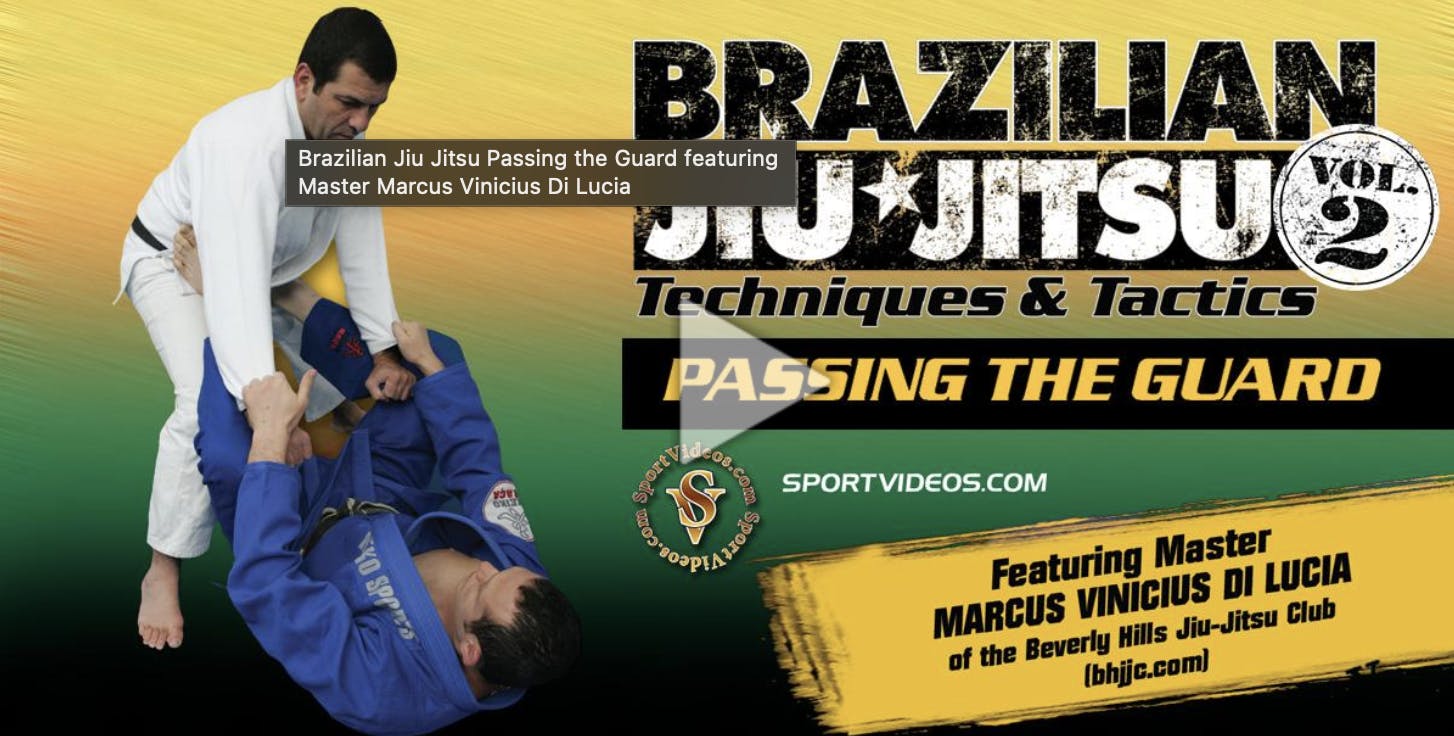
Friday, April 4, 2025
US Sports Volleyball: Mastering Volleyball - Advanced Skills and Drills featuring Coach Al Scates (19 NCAA National Championships) and Hüberli/Kernen vs. Shaw/Cheng - Quarter Final Highlights
The Buzzer Beaters Are Here! Now Streaming On US Sports Radio
Prepare to play like a champion every time you step on the court. In this unique program, Hall of Fame Coach Al Scates goes beyond the fundamentals to provide you with the advanced techniques of volleyball that are essential to winning championships. Among the topics covered are: serving, passing, setting, blocking and drills. Each chapter is like a personal coaching clinic designed to help individuals and teams drastically improve. This unique DVD will show you the same methods that Coach Scates has used to guide his teams to 19 NCAA championship titles during his phenomenal coaching career.
0:00 / 0:00
15 seconds
15 seconds
One of the greatest coaching careers in the history of collegiate sports came to an end following the 2012 season, as Al Scates retired from coaching at UCLA. Scates left an unmatched legacy of success, longevity and influence in collegiate men's volleyball. Al Scates and UCLA volleyball won NCAA championships in 1970-71-72-74-75-76-79-81- 82-83-84-87-89-93-95-96-98-2000-06. He was named Coach of the Year in 1984, '87, '93, '96, '98 and 2006.
Scates' 50-year coaching record of 1,239-290 (.812) is one of the best in collegiate sports. When he retired that record ranked first among all Division I volleyball coaches. In addition to their 19 NCAA titles, the Bruins also won USVBA collegiate championships in 1965 and '67 under Scates' stewardship. During his six decades at UCLA, he coached 54 different first-team NCAA and 26 USVBA All-Americans, 44 U.S. National Team members, 27 Olympians and seven different Players of the Year. On Dec. 16, 2004, Al Scates was inducted into the American Volleyball Coaches Association (AVCA) Hall of Fame.
Thursday, April 3, 2025
US Sports Softball: How to Create a Softball Team’s Offensive Mindset and (Highlights) #16 Nebraska vs #10 Texas Tech (CRAZY GAME!)
Get Close To The Final Four! Now Streaming On US Sports Radio
- By Grant Young
One of the hardest aspects of coaching softball is getting players to overcome the various mental hurdles they face at the plate. Of course, it’s natural for all humans to experience self-doubt and negative thoughts at times. This is exacerbated in a sport like softball, where a hitter is destined to fail much more often than they’re going to succeed.
This is why cultivating a sturdy mindset at the plate, one that doesn’t view success in terms of hits or home runs, but in quality at-bats and personal progression, is one of the most important qualities a coach can impart to their player.
0:00 / 0:00
15 seconds
15 seconds
These lessons won’t only benefit the player at the plate, but they will continue to serve them long after their softball days are done, once they experience the harsh realities that the real world is sure to provide.
Softball coach Donna Fields knows a thing or two about cultivating success for her players, both on and off the field. Coach Fields just finished her 27th season at the helm of the St. Mary’s Rattlers softball team in 2024. Already a member of the St. Mary's Athletics Hall of Fame, Fields is the only Rattler in school history with a national championship as a player and coach. On December 10, 2021, Fields was also inducted into the National Fastpitch Coaches Association (NFCA) Hall of Fame.
Across Coach Fields’ incredible coaching career, the Rattlers have won 18 conference titles, four NCAA Regionals, and the 2002 NCAA title.
In Coach Fields’ ‘Building Offensive Players: Getting Them to Buy into Your Offensive Mindset’ Course, she details the precise methods she has used across her nearly three decades of head coaching to build an offensive mindset that her entire team encompasses, regardless of what their stats say.
We have compiled some of her strongest insights below, to that you can get a glimpse of the ways Coach Field has built and sustained such a winning program.
Your Offense Depends on your Personnel Along with your System
“As I work each day, I look at my athletes and I try to create our practice to where I can see what our athletes are able to perform, what their strengths are, what their weaknesses might be. Definitely build on our strengths and try to make our weaknesses stronger on a day to day basis.”
Coach Fields stresses that a team’s offensive mindset is going to change each year, depending on who is on each team’s roster. If your team has more power hitters, then you should alter your approach to give those power hitters opportunities to hit with runners on base, and emphasize swinging for the fences. And if you have a more speed-focused lineup, then you should facilitate a mindset that prioritizes reaching base, playing small ball, and manufacturing runs that way.
The important point here is that softball coaches must remain adaptable (meaning, not set in their ways) if they’re going to see success each year. This requires humility, which is a great quality for not only coaches to have, but for coaches to instill within their players through example.
Routine Hitting
Whenever Coach Fields finds the time, she tries to make her team’s batting practice sessions into what she calls ‘Routine Hitting’.
This is where she’ll divide her hitters into four to six groups, with one group doing station work (which will vary, depending on what your offense is working on at the moment, such as bunts or anything else related to small ball), a group in the batting cage (whether it be front toss, hitting off of the machine, or anything else), a group hitting on the field with live batting practice, and another group shagging on the field.
This allows Coach Fields to bring strategy into her team’s hitting, and simulating scenarios that players will actually experience in the game. Giving them these repetitions when the pressure isn’t so great is a fantastic way to help them get comfortable when the games to begin to count, and there’s another team in the opposing dugout.
Utilizing this style of batting practice ensures that your players are remaining active and engaged at all times, finding ways to improve and help their teammates out. Even in the shagging portion, players should be at their normal positions, getting as many game-like repetitions as possible from the hitters who are taking live batting practice.
Manufacturing Runs
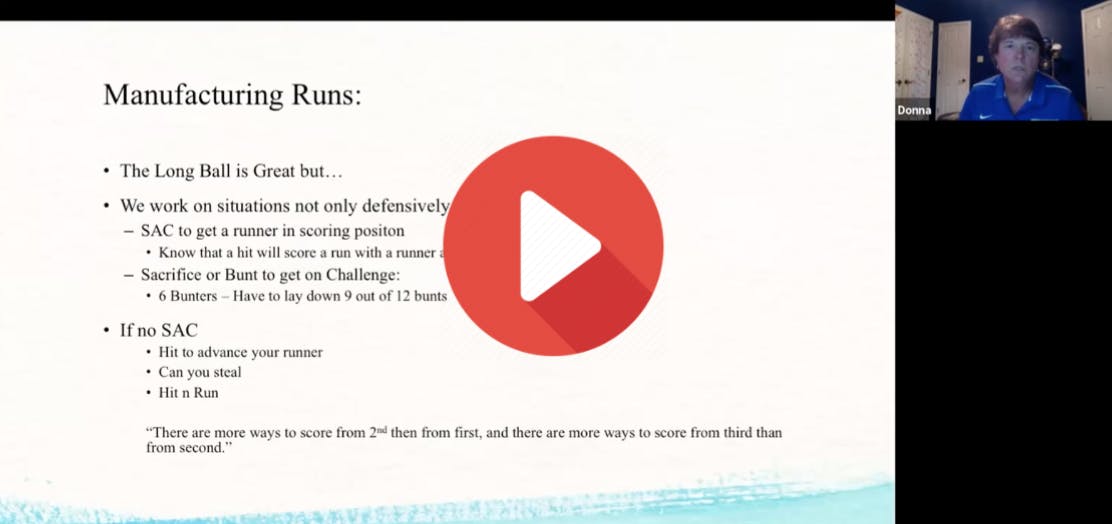
Coach Fields notes that manufacturing runs is a major part of her team’s practices, regardless of whether her team is more catered toward power hitting.
The reason for this is that, while your team might be able to rely on the long ball during the regular season or in conference play, there will come a time at some point later on in the season where you’ll face a pitcher that’s good enough to stop your power hitters from hitting home runs.
And when that happens, you need to have plan B, so that your offense still has a chance to succeed.
Coach Fields notes how she’s a big believer in sacrifice bunting, in order to get her baserunners into scoring position. While this isn’t always the most popular choice, it’s a great way to manufacture runs against elite pitching.
But coaches can’t just assume their players (hitters and baserunners alike) will know how to execute a sacrifice bunt scenario to a tee. Therefore, players must get these repetitions during practice to feel good about doing so in high-stakes, postseason situations.
All of Coach Fields’ points are about
creating comfortability for players at the plate, which she believes is
the most important part of a solid offensive mindset. And it’s within all coaches to help cultivate that feeling for their teams—which should lead to success.
Subscribe to:
Posts (Atom)




